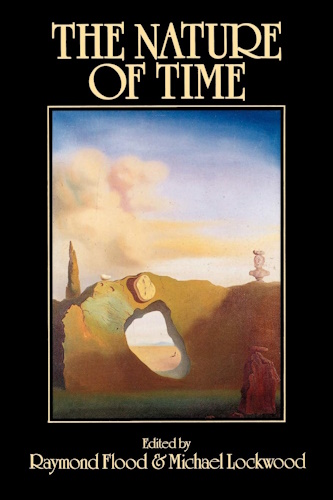

From the Back Cover
Why does time appear to run in only one direction? We remember the past- but why not the future? We can influence the future- but could we, even theoretically, influence the past?
Generations of philosophers and theologians, physicists and mathematicians have puzzles and speculated about these and the many other questions that surround the concept of time. Recent scientific work is said to explain the directionality of time. But time still contains many mysteries- black holes and big bangs, asymmetries and relativities, arrows and loops - that will doubtless continue to occupy us for centuries to come.
In this impressive collection of original articles ten internationally known scholars explore and explains the nature of time, apace and now space-time. Founded on the latest developments in thermodynamics, quantum theory and cosmology, their ideas will fascinate anyone interested in Einstein's theory of relativity.
Paperback: 196 pages
Publisher: Wiley-Blackwell (January 8, 1991)
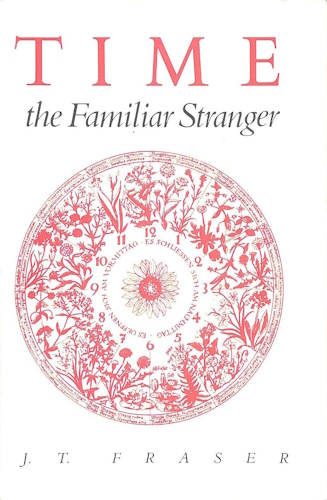

Fraser's engaging book presents a discussion of clocks, calendars used throughout history, and time in various cultures. The unifying theme is the difference between pyschological time and time in modern physics. Science rejects the concept of time as always having the dimensions of past, present, and futureEinstein suggested objects exist in four-dimensional "spacetime." The author's skill prevents the reader from becoming lost in advanced physics, but on occasion he slips: the solution to Zeno's paradoxes does not work; and Marx did not say time was entirely a social convention. But this is a delightful book. David Gordon, Bowling Green State Univ., Ohio Copyright 1987 Reed Business Information, Inc.
Hardcover: 408 pages
Publisher: University of Massachusetts Press; First edition (November 12, 1987)
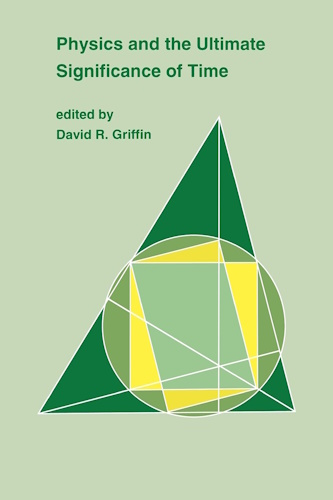

Physics and the Ultimate Significance of Time

Challenges the conventional view of the nature of time.
About the Author
David Ray Griffin is Professor of Philosophy and Religion at the School of Theology at Claremont and Claremont Graduate School and Executive Director of the Center for Process Studies.
Paperback: 340 pages
Publisher: State University of New York Press (November 15, 1985)
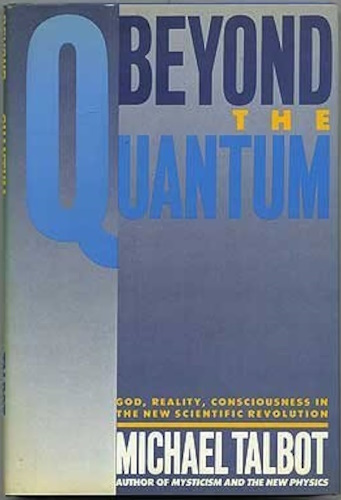

From Library Journal
Quantum mechanics describes a universe with physical properties that run completely contrary to everyday experience and intuition. These strange properties cause some people to seek equally strange philosophical theories to explain them. Talbot attempts to link the physical theories with some non-physical experimental results. The latter are, if true, disturbing and fascinating. Among the subjects explored are poltergeists, the possibility of instantaneous communication across great distances, and the nature of the mind and consciousness. This is an interesting combination of physics, metaphysics, and parapsychology. Harold D. Shane, Mathematics Dept., Baruch Coll., CUNY Copyright 1987 Reed Business Information, Inc.
Hardcover: 240 pages
Publisher: Scribner; First Edition edition (January 26, 1987)
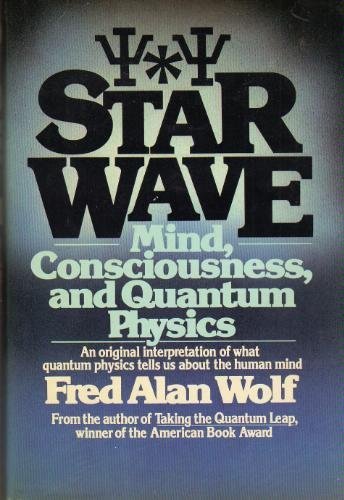

Star Wave: Mind, Consciousness and Quantum Physics

Relates the discoveries of quantum physics to the workings of the human mind and explores the process of observing shapes and how and what the mind perceives.
Hardcover: 342 pages
Publisher: Macmillan; 1st edition (1984)
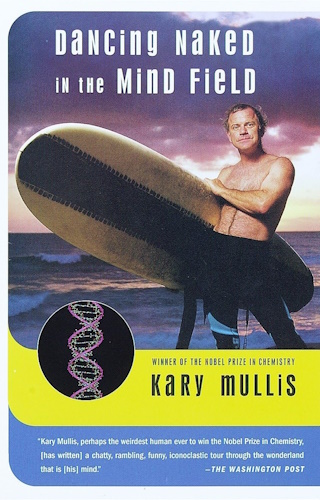

Dancing Naked in the Mind Field

From the Inside Flap
Here is a multidimensional playland of ideas from the world's most eccentric Nobel-Prize winning scientist. Kary Mullis is legendary for his invention of PCR, which redefined the world of DNA, genetics, and forensic science. He is also a surfer, a veteran of Berkeley in the sixties, and perhaps the only Nobel laureate to describe a possible encounter with aliens. A scientist of boundless curiosity, he refuses to accept any proposition based on secondhand or hearsay evidence, and always looks for the "money trail" when scientists make announcements.
Mullis writes with passion and humor about a wide range of topics: from global warming to the O. J. Simpson trial, from poisonous spiders to HIV, from scientific method to astrology. Dancing Naked in the Mind Field challenges us to question the authority of scientific dogma even as it reveals the workings of an uncannily original scientific mind.
Paperback: 240 pages
Publisher: Vintage; Reprint edition (January 4, 2000)
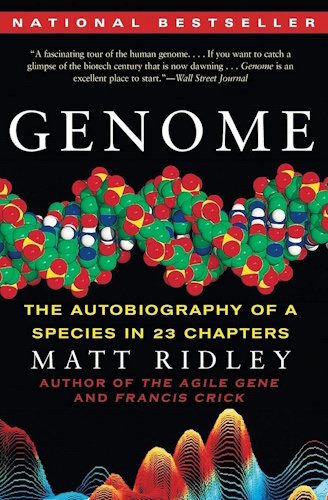

Genome: The Autobiography of a Species in 23 Chapters

The genome's been mapped. But what does it mean? Arguably the most significant scientific discovery of the new century, the mapping of the twenty-three pairs of chromosomes that make up the human genome raises almost as many questions as it answers. Questions that will profoundly impact the way we think about disease, about longevity, and about free will. Questions that will affect the rest of your life. Genome offers extraordinary insight into the ramifications of this incredible breakthrough. By picking one newly discovered gene from each pair of chromosomes and telling its story, Matt Ridley recounts the history of our species and its ancestors from the dawn of life to the brink of future medicine. From Huntington's disease to cancer, from the applications of gene therapy to the horrors of eugenics, Matt Ridley probes the scientific, philosophical, and moral issues arising as a result of the mapping of the genome. It will help you understand what this scientific milestone means for you, for your children, and for humankind.
About the Author
Matt Ridley is the award-winning, bestselling author of several books, including The Rational Optimist: How Prosperity Evolves; Genome: The Autobiography of a Species in 23 Chapters; and The Red Queen: Sex and the Evolution of Human Nature. His books have sold more than one million copies in thirty languages worldwide. He writes regularly for The Times (London) and The Wall Street Journal, and is a member of the House of Lords. He lives in England.
Paperback: 368 pages
Publisher: Harper Perennial; Reprint edition (May 30, 2006)
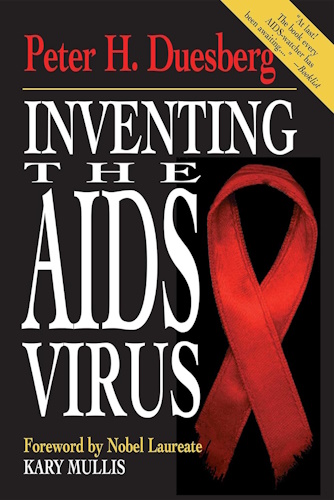

From Booklist
At last! This is the book every AIDS-watcher has been awaiting, in which the most prominent and persistent critic of HIV as the cause of AIDS presents his case most exhaustively and popularly. Duesberg, himself a virologist, stoutly maintains that HIV cannot cause AIDS because it fails to meet the rules by which a virus is implicated as disease-causing. He says that the causes of AIDS in First World countries most probably are overuse of toxic drugs--by legal prescription (e.g., AZT) as well as illicit use (e.g., the nitrite inhalants known as poppers that are used to enhance sexual capability)--and multiple and repeated infections with venereal diseases; in the Third World, they are malnutrition and maladies (e.g., tuberculosis) rare in wealthy nations but still prevalent in poor ones as well as, again, substance abuse. Duesberg massively documents and cogently argues these positions but not before laying out the historic and political reasons why most members of his profession and related medical specialists seized on a viral causation for AIDS. Basically, virologists wanted another success like that with polio and, frustrated by complete failure to find viral causes for cancer, took up AIDS as the perfect challenge as well as, once HIV was discovered, a ticket for prolonging their first-class ride on the medical research gravy train. Strong stuff, but Duesberg has never been alone in this analysis or in his scientific arguments. He has never before gathered his case together and presented it to the general public, though, so regard this book as a milestone essential to any collection concerned with AIDS. Ray Olson
From Kirkus Reviews
A well-credentialed scientist's hard-driving attack on the accepted view that AIDS is an infectious disease caused by HIV. Duesberg (Molecular biology/Univ. of Calif., Berkeley), an early researcher in the field of retroviruses, asserts that HIV, like virtually all retroviruses, is harmless. He finds that HIV meets none of the usual criteria (such as the six laws of virology) used to establish that a microbe causes disease. But if that is so, why do scientists persist in saying that AIDS is an epidemic caused by HIV? As Duesberg tells it, the federal Centers for Disease Control and Prevention needed a serious epidemic to justify its continued existence, and by naming AIDS a single contagious disease, it created an atmosphere of public fear that brought it increased funding and power. The biomedical establishment took note. Having failed to find a viral cause of cancer, Duesberg says, virus hunters needed a new disease, and AIDS was it. The HIV-AIDS connection was then announced by Robert Gallo, head of a retrovirus lab at the National Cancer Institute, at a 1984 press conference rather than demonstrated in a peer- reviewed scientific paper. Further, Duesberg charges, the pharmaceutical companies exploited the situation by bringing back highly toxic failed cancer drugs, such as AZT, which, he says, destroys the immune system and causes AIDS-like symptoms. Duesberg cites other scientists who have questioned the HIV-AIDS hypothesis, among them several Nobel laureates, including Kary Mullis (for Chemistry), the author of this book's foreword. Duesberg's own theory is that AIDS is linked to the use of immunity-suppressing illicit drugs (such as crack and ``poppers''), and he urges investigation along these lines. One need not accept Duesberg's drug hypothesis, however, to be persuaded that the serious charges he makes deserve serious answers. A controversial book, certain to be met with strong resistance from the biomedical establishment. Four appendixes (not seen) include articles on HIV by Duesberg in scientific journals. -- Copyright ©1996, Kirkus Associates, LP. All rights reserved.
Hardcover: 722 pages
Publisher: Regnery Publishing, Inc.; 1st edition (February 27, 1996)
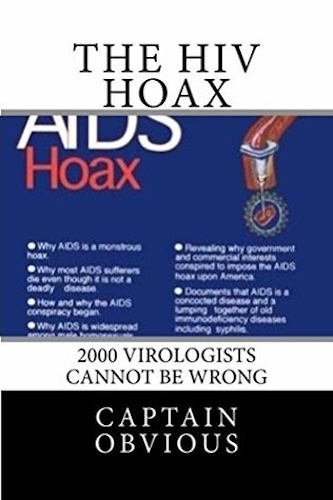
The HIV Hoax: 2000 Virologists cannot be wrong by Captain Obvious (2014-12-09)
Dr. Kary Mullis, Biochemist, 1993 Nobel Prize for Chemistry: Dr. Kary Mullis "If there is evidence that HIV causes AIDS, there should be scientific documents which either singly or collectively demonstrate that fact, at least with a high probability. There is no such document." (Sunday Times (London) 28 nov. 1993)
Dr. Heinz Ludwig Sänger, Emeritus Professor of Molecular Biology and Virology, Max-Planck-Institutes for Biochemy, München. Robert Koch Award 1978: "Up to today there is actually no single scientifically really convincing evidence for the existence of HIV. Not even once such a retrovirus has been isolated and purified by the methods of classical virology." (Letter to Süddeutsche Zeitung 2000)
Dr. Serge Lang, Professor of Mathematics, Yale University: "I do not regard the causal relationship between HIV and any disease as settled. I have seen considerable evidence that highly improper statistics concerning HIV and AIDS have been passed off as science, and that top members of the scientific establishment have carelessly, if not irresponsible, joined the media in spreading misinformation about the nature of AIDS." (Yale Scientific, Fall 1994)
Dr. Harry Rubin, Professor of Molecular and Cell Biology, University of California at Berkeley: Prof. Harry Rubin "It is not proven that AIDS is caused by HIV infection, nor is it proven that it plays no role whatever in the syndrome." (Sunday Times (London) 3 April 1994)
Dr. Richard Strohman, Emeritus Professor of Cell Biology at the University of California at Berkeley: "In the old days it was required that a scientist address the possibilities of proving his hypothesis wrong as well as right. Now there's none of that in standard HIV-AIDS program with all its billions of dollars." (Penthouse April 1994)
Dr. Harvey Bialy, Molecular Biologist, former editor of Bio/Technology and Nature Biotechnology: Harvey Bialy "HIV is an ordinary retrovirus. There is nothing about this virus that is unique. Everything that is discovered about HIV has an analogue in other retroviruses that don't cause AIDS. HIV only contains a very small piece of genetic information. There's no way it can do all these elaborate things they say it does." (Spin June 1992)
Dr. Roger Cunningham, Immunologist, Microbiologist and Director of the Centre for Immunology at the State University of New York at Buffalo: "Unfortunately, an AIDS 'establishment' seems to have formed that intends to discourage challenges to the dogma on one side and often insists on following discredited ideas on the other." (Sunday Times (London) 3 April 1994)
Dr. Gordon Stewart, Emeritus Professor of Public Health, University of Glasgow: Prof. Gordon Stwart "AIDS is a behavioural disease. It is multifactorial, brought on by several simultaneous strains on the immune system - drugs, pharmaceutical and recreational, sexually transmitted diseases, multiple viral infections." (Spin June 1992)
Dr. Alfred Hässig, (1921-1999), former Professor of Immunology at the University of Bern, and former director Swiss Red Cross blood banks:Prof. Alfred Hassig "The sentence of death accompanying the medical diagnosis of AIDS should be abolished." (Sunday Times (London) 3 April 1994)
Dr. Charles Thomas, former Professor of Biochemistry, Harvard and John Hopkins Universities: "The HIV-causes-AIDS dogma represents the grandest and perhaps the most morally destructive fraud that has ever been perpetrated on young men and women of the Western world." (Sunday Times (London) 3 April 1994)
Dr. Joseph Sonnabend, New York Physician, founder of the American Foundation for AIDS Research (AmFAR):Joe Sonnabend "The marketing of HIV, through press releases and statements, as a killer virus causing AIDS without the need for any other factors, has so distorted research and treatment that it may have caused thousands of people to suffer and die." (Sunday times (London) 17 May 1992)
Read the book. You are about to find out how sick the CDC and Government are.
Paperback: 36 pages
Publisher: CreateSpace Independent Publishing Platform (December 9, 2014)
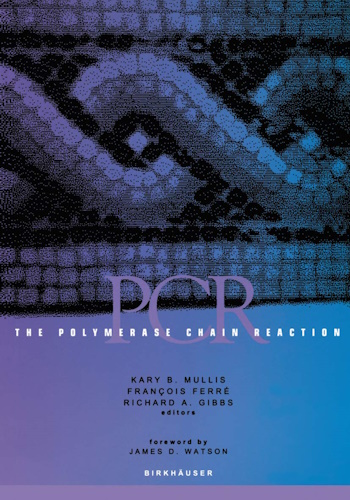

James D. Watson When, in late March of 1953, Francis Crick and I came to write the first Nature paper describing the double helical structure of the DNA molecule, Francis had wanted to include a lengthy discussion of the genetic implications of a molecule whose struc ture we had divined from a minimum of experimental data and on theoretical argu ments based on physical principles. But I felt that this might be tempting fate, given that we had not yet seen the detailed evidence from King's College. Nevertheless, we reached a compromise and decided to include a sentence that pointed to the biological significance of the molecule's key feature-the complementary pairing of the bases. "It has not escaped our notice," Francis wrote, "that the specific pairing that we have postulated immediately suggests a possible copying mechanism for the genetic material." By May, when we were writing the second Nature paper, I was more confident that the proposed structure was at the very least substantially correct, so that this second paper contains a discussion of molecular self-duplication using templates or molds. We pointed out that, as a consequence of base pairing, a DNA molecule has two chains that are complementary to each other. Each chain could then act ". . . as a template for the formation on itself of a new companion chain, so that eventually we shall have two pairs of chains, where we only had one before" and, moreover, " ...
Paperback: 458 pages
Publisher: Birkhäuser; 1994 edition (March 1, 1994)
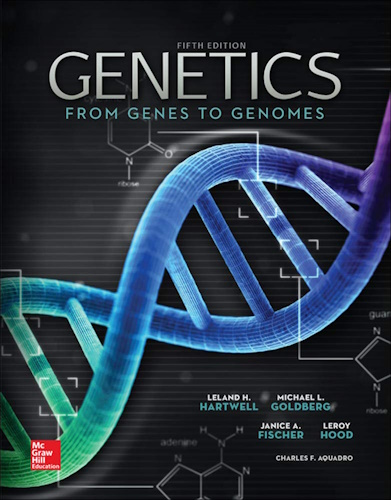

Genetics: From Genes to Genomes, 5th edition

Genetics: From Genes to Genomes is a cutting-edge, introductory genetics text authored by an unparalleled author team, including Nobel Prize winner, Leland Hartwell. The 5th edition continues to build upon the integration of Mendelian and molecular principles, providing students with the links between the early understanding of genetics and the new molecular discoveries that have changed the way the field of genetics is viewed. Users who purchase Connect Plus receive access to the full online ebook version of the textbook as well as SmartBook.
About the Author
Dr. Leland Hartwell is President and Director of Seattle’s Fred Hutchinson Cancer Research Center and Professor of Genome Sciences at the University of Washington. Dr. Hartwell’s primary research contributions were in identifying genes that control cell division in yeast, including those necessary for the division process as well as those necessary for the fi delity of genome reproduction. Subsequently, many of these same genes have been found to control cell division in humans and oft en to be the site of alteration in cancer cells.
Dr. Hartwell is a member of the National Academy of Sciences and has received the Albert Lasker Basic Medical Research Award, the Gairdner Foundation International Award, the Genetics Society Medal, and the 2001 Nobel Prize in Physiology or Medicine.
Hardcover: 816 pages
Publisher: McGraw-Hill Education; 5th edition (September 5, 2014)
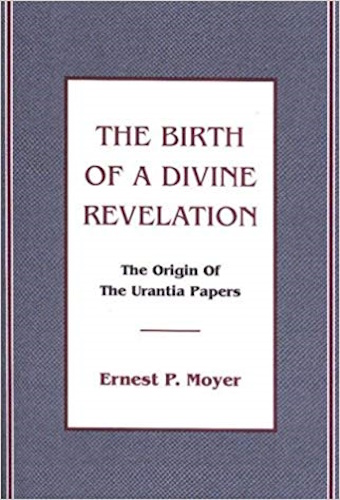

The Birth of a Divine Revelation: The Origin of the Urantia Papers

Report on the origins of the Urantia Papers. Describes the evolution of events which led to the Papers. Includes biography of William Sadler, the human agent, an account of an associated group, (the Forum), and discussion of threats to the Revelation before it was published.. Offers a wealth of detail heretofore unpublished. Original scholarly research.
About the Author
Through a series of unusual events the author came to recognize that our planet is experiencing celestial visitations today, and that this world is under the supervision of agencies which report directly to our Creator. As a result of these discoveries he had a striking spiritual experience late in 1967. Since that time he has devoted his energies to the study and purpose of revelation.
Excerpt. © Reprinted by permission. All rights reserved.
From Chapter 1: A man wanted to know the difference between Edgar Cayce, the so-called Sleeping Prophet, and the Sleeping Subject described by William Sadler in the Appendix to his book, The Mind At Mischief. The latter was suspected of being involved in the creation of The Urantia Papers. I shall describe the sequence of events which led Sadler to investigate the behavior of the Sleeping Subject, how that relationship developed into The Urantia Papers, and why Edgar Cayce could not have been the Sleeping Subject.
Paperback: 600 pages
Publisher: Moyer Pub (February 16, 2000)
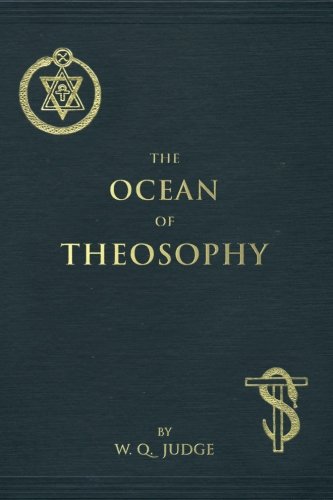

The Ocean of Theosophy represents an attempt to summarize the main ideas involved in the theosophical philosophy, explained in a way that can be understood easily by the average reader—each chapter is devoted to a specific tenet of theosophy and provides an overview of its meaning. To this day "The Ocean" remains one of the best books for newcomers to theosophy. Yet it also contains ideas and explanations that continue to be helpful as one's studies go deeper into the philosophy.
List of Chapters:
- Chapter I. Theosophy and the Masters
- Chapter II. General Principles
- Chapter III. The Earth Chain
- Chapter IV. Septenary Constitution of Man
- Chapter V. Body and Astral Body
- Chapter VI. Kama—Desire
- Chapter VII. Manas
- Chapter VIII. Of Reincarnation
- Chapter IX. Reincarnation Continued
- Chapter X. Arguments Supporting Reincarnation
- Chapter XI. Karma
- Chapter XII. Kama Loka
- Chatper XIII. Devachan
- Chapter XIV. Cycles
- Chapter XV. Differentiation of Species—Missing Links
- Chapter XVI. Psychic Laws, Forces, and Phenomena
- Chapter XVII. Psychic Phenomena and Spiritualism
About the Author
William Quan Judge was born in Dublin, Ireland, on April 13, 1851. His family emigrated in 1864 to New York where he specialized in corporate law (New York State Bar, 1872). A co-founder with H. P. Blavatsky and Henry S. Olcott of The Theosophical Society in 1875, he later became General Secretary of its American Section and Vice President of the international Society. In this capacity he organized and presided over the Theosophical Congress at the World's Parliament of Religions held in Chicago during the 1893 Columbian Exposition. Through his writing and extensive lecturing around the United States, he helped make theosophy known and respected. He died in New York City on March 21, 1896 at the age of 44.
Paperback: 138 pages
Publisher: CreateSpace Independent Publishing Platform (August 10, 2016)
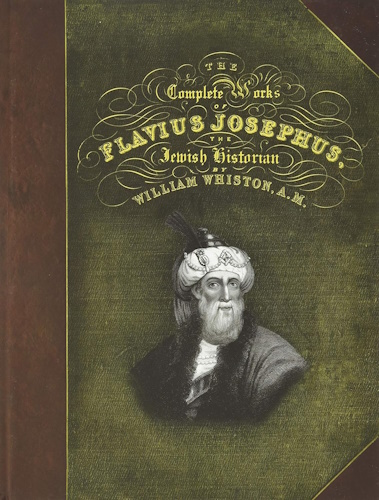

The Complete Works of Flavius Josephus - Legendary Jewish Historian and His Chronicle of Ancient History

Explore the history of first century Jews from the eyewitness account of Flavius Josephus, legendary Jewish historian. His extra-biblical account offers fascinating historical context to enhance your study of primeval Jewish, Christian, and Roman history. Within this stunning, six book compilation is an invaluable narrative filling in the gaps of otherwise unknown cultural and political details of Israel's ancient civilization.
Flavius Josephus counseled Pharisees on Jewish law from a very early age. His perspective of the Jewish Roman war is truly unique. Josephus scandalously survived the destruction of Jerusalem, became Roman, and was later despised by Jews as a traitor. Yet he is the acclaimed historian of this critical era of Christian history answering questions you didn't know you needed to ask.
This beautifully bound hardcover edition of our earliest history has the look and feel of antiquity. It is an exquisite reproduction of an original, circa - 1850 printing. The thick, crisp, parchment-like paper, vintage font, page layout and drawings offer you the feeling of an authentic rare book in your hands. Could any library be complete without it?
The Complete Works of Flavius Josephus, the Jewish Historian as translated by William Whiston includes:
- Antiquities of the Jews
- History of the Jewish Wars
- Sequel to the History of the Jewish Wars
- Flavius Josephus against Apion
- The Life of Flavius Josephus
- Three Dissertations on Jesus Christ, Abraham, John the Baptist, and James the Just
The first church historian, Eusebius, calls Flavius Josephus "the most famous Jew of his time." His writings provide us with prized details that did not survive in any other records. Your study of his exceptional assessment of Israel's history will bring critical insight to the last two millennia of world events.
Hardcover: 944 pages
Publisher: Attic Books; 1St Edition edition (October 15, 2008)
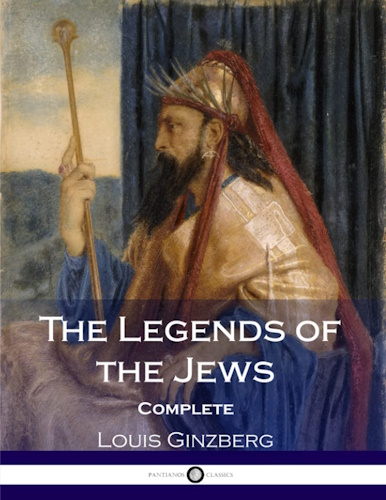

The Legends of the Jews Complete

Louis Ginzberg's supreme compendium of Jewish legends, myths and ancient lore enliven and challenge readers to understand greatly the civilization behind the greatest prophecies and holy writings ever written.
A celebrated scholar of the Talmud, Torah and other holy texts, Louis Ginzberg distinguished himself as gifted in matters of holy lore from a young age. All four volumes of his rendition of the Judaic legends are contained in this excellent edition. They run as follows:
Volume One begins with the years of creation, detailing God's creation of the Earth and all the lands and creatures upon it. Man's creation, and the story of Adam and Eve, are duly related, as are the ten generations which separated Adam from Noah. The Great Flood, whereby Noah escaped the destruction by building his famous ark, is followed by the ten generation gap between Noah and Abraham, the patriach of Judaism. Finally we hear of the life of Jacob, who following drought would emigrate to Egypt with his family.
Volume Two, roughly corresponding with the Biblical Books of Exodus and Job, begins with the life and death of Joseph. His life and the lives of Jacob's sons - the founders of the Jewish tribes - are likewise told. The famous story of Job - a morally upstanding family man who suffers many misfortunes - is then related. Finally we hear the story of Moses and the conflict he arrives at with the Pharaoh.
Volume Three commences with Moses finally deciding to lead the Jews out of Egypt, the oppression of the Pharaoh having become too much to bear. After departing, the construction of the Tabernacle and the tumultuous events of the Year of Disfavor are detailed. The tale of the prophet Balaam, and his temptation with money from King Balak of Moab, is told. Finally, the volume concludes with the death of Moses.
Volume Four opens with the story of Joshua, who was the servant of Moses and one of the twelve spies who scouted the lands of Canaan at Moses' behest. Following the death of Joshua the tale of the Judges and of conflicts between the Israelites and Canaanites are told. The subsequent generations of Jewish society, including the great King Solomon, are hereafter related.
--
As a young man, Louis Ginzberg emigrated from his native Russia to the United States. Initially aimless and unsure of his future, and deeply affected by the death of his pious father, it was after a few years as an emigre that study of Jewish history and the sacred texts proved a viable outlet. He proved a voracious and highly competent scholar and teacher, working at the Jewish Theological Seminary of America and accepting an honorary doctorate from Harvard University.
Paperback: 514 pages
Publisher: CreateSpace Independent Publishing Platform (September 2, 2017)
![]()
![]()